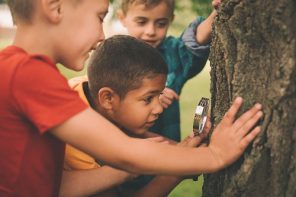Are your young learners sitting in front of a computer screen multiple hours a day as part of remote learning? Do you see them getting antsy and reckless after sitting there for an extended period? Children have short attention spans. This makes it very important for them to take brain breaks—mental breaks designed to help students stay attentive and focused.
Did you know that for new information become part of one’s memory it must pass through the brain’s amygdala and then reach the prefrontal cortex? When students’ brains are given too much information, the new content will not go through this process. When this happens, the information is not retained. Brain breaks are necessary to restore the emotional state needed to return the amygdala from overdrive into the optimal state for successful information flow.
Brain Break Best Practices
These short breaks provide time for students to process information and retain what they are being taught. Younger children have a shorter attention span than older children, so researchers encourage brain breaks about every five to 10 minutes for young children, and 20-30 minutes for older students.
Brain breaks are teacher-driven in the classroom. If your child is remote learning and watching pre-recorded videos, do not forget to encourage them to take brain breaks! Taking brain breaks at home, like in the classroom, will help your child maintain their focus, retain more knowledge, and stay on task. Brain breaks should also occur while your child is working on homework assignments. These breaks should be short and give your child the chance to refocus. Students should also know these brain breaks are planned; this gives them something look forward to.
Brain Break Benefits
In addition to increasing the information learned, brain breaks have many additional benefits. These benefits include:
- Helping with self-regulation
- Sharpening short-term memory
- Reducing anxiety and burnout
- Improving academic achievement
- Benefiting overall health and wellness
- Boosting attention and motivation to learn
- Building new skills.

Boosting Break Breaks
Brain breaks can be done in a variety of ways. Even your child prefers a certain type of break, change it up! Introduce your child to a variety of breaks to keep them engaged. Below are examples, some including movement and skill-building.
- Physical brain breaks are used to get students up and moving. They help to burn off some of their giggles and energy.
- Dance
- Jumping jacks
- Jog in place
- Play Simon Says
- Relaxing brain breaks are used to help students calm down and reset their energy.
- Yoga
- Listen to relaxing music
- Meditate
- Color
- Sensory brain breaks help to stimulate one’s sense and feel revitalized.
- Step outside and get some fresh air.
- Scavenger hunt
- Playdough
- Skill building brain breaks given students the change to develop new skills, but take their mind off the task they were engaged in.
- Jigsaw puzzles
- Storytime
- Brain teasers
- Riddles
- Brain break games give students a change of pace between their assignments.
- Board games
- Charades
Brain breaks only need to be a few short minutes. They should not disrupt a lesson at hand. Giving children this time to do another activity provides the opportunity to refocus. The more focused they are, the more knowledge they will retain.
Lauren Brenner, M.S.Ed., is the Marketing Manager at AWE Learning, the leading provider of digital learning resources to public libraries and homeschoolers, and has earned Certifications in Elementary Education, Middle School Mathematics and Reading Specialist.





